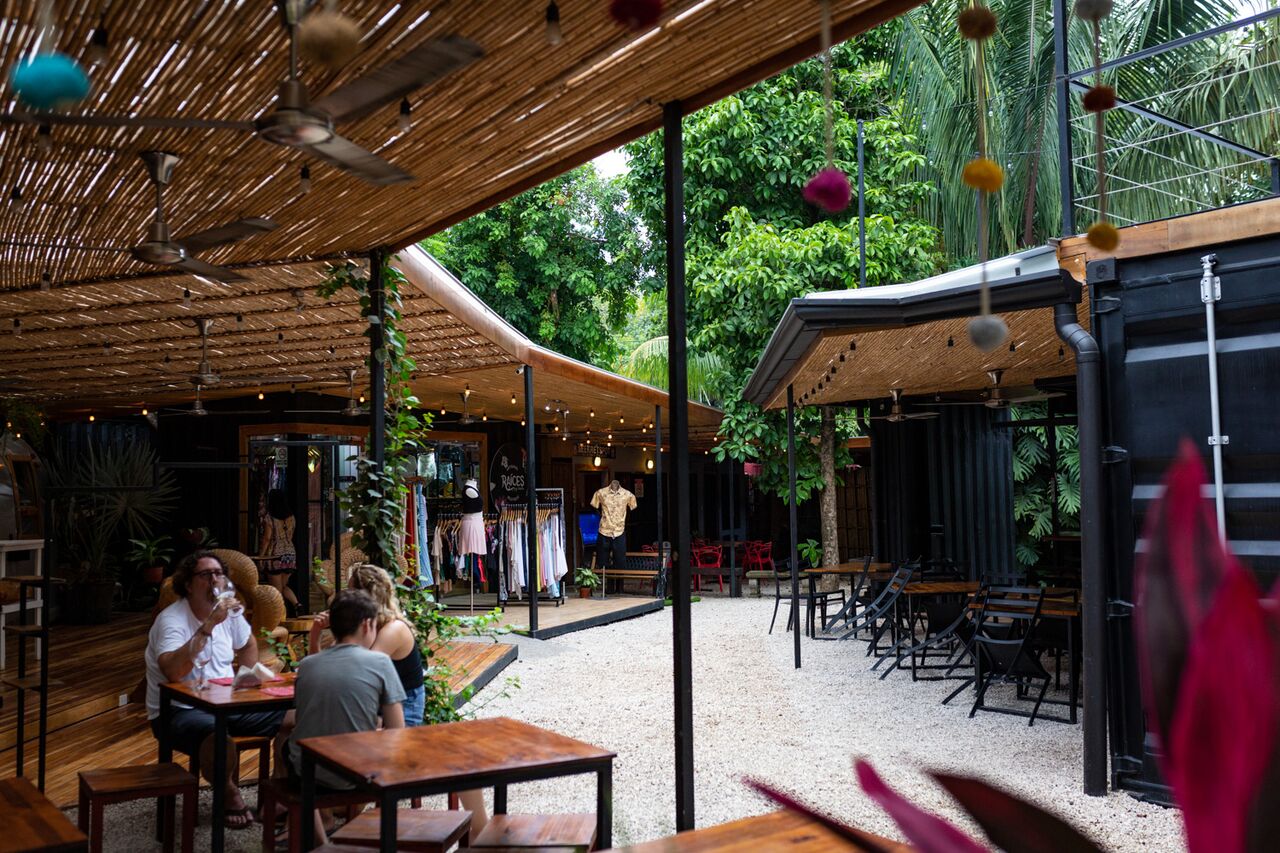
When I was a child, I remember going into a market holding my grandmother’s hand and seeing people: some taking their time, others in more of a hurry, shopping at stands or standing around drinking juice at the bar of some small restaurant. Others ate soups or rice dishes next to apparent strangers, at wooden tables with checkered tablecloths and plastic decorations on top.
Almost 25 years later, I found several gastronomic markets in Guanacaste that want to emulate that same experience of informality and interaction, but with new components. They are characterized by modern architectural designs, well lit with warm lighting and equipped with communal and individual tables. And obviously, a culinary selection that combines simple dishes with gourmet options.
The consulting firm that studies this trend nationally and internationally, Cushman & Wakefield AB Advisory, recognizes the little markets as a model that is gaining more and more ground. In Guanacaste they proliferate at a slower rate than in the Greater Metropolitan Area but it is not difficult to imagine that the trend will grow.
In the province, there are at least three places under this new concept. El Mercadito of Tamarindo is one of them. Since February 2018, 10 local food establishments and national design stores converge there. The culinary selection ranges from handmade burgers to Argentinian sandwiches, finishing up with Venezuelan pupusas.
The location’s owner, Juan Carlos Cerdas, is evaluating opening three new markets in other parts of the province in the medium and long term.
In Tamarindo we realized that there was a lot of nightlife but that a place like this, where friends and families could be together, was lacking. It was thought up as a social space. That philosophy has made it quite busy,” Cerdas commented.
According to the consultant Cushman, these new spaces respond to changes in consumer tastes, which are increasingly more sophisticated and informed.
“The explosion of the “foodie” culture coincided with the emergence of a new demographic: millennials (although no one agrees on their birth dates, many agree that they go from 1982 to 1994). These consumers want authenticity and quality food,” cites the company’s most recent report on gastronomic markets.
Is this for Everyone?
The director of the firm Dual Arquitectura y Construcción, which provides advice on gastronomic markets in the country, Fabiola Suarez, thinks Guanacaste has great potential for establishing such places.
A good element to invest in the area is that it gathers national and foreign public together in one place and the market is not saturated yet.
“We must not forget that what people, here in Guanacaste or in San Jose, are looking for today are pleasant places to share, not just places to eat because I am hungry. It’s about human relationships,” Suarez commented.

The Mercadito of Tamarindo has a total capacity of 300 people and has an are to offer live music shows. Photo: César Arroyo
That mix between locals and foreigners is what strengthens Little Italy, another little market located in Guiones Beach, Nosara, as of two years ago, with outdoor tables and with most of its vendors connected to each other.
But catering to both audiences is also a challenge. According to owner Ricardo Micalli, the key for them is that the tenants offer variety but also quality.
“We have pizza and ice cream, which attract an audience more from the community [but also] we have more sophisticated food. That was a balance we were looking for,” said Micalli.
The challenge is also to offer varied prices, so that people from the community can afford them. Cerdas, from El Mercadito of Tamarindo, said he selected the restaurants in his business venture thinking also about the prices at which they offered their products.
“We wanted to have competitive prices for all types of customers,” he said.
As a result, both Cerdas and Micalli ensure that the little markets end up representing an opportunity for independent ventures, but also for the same food chains.
One of the administrators of Doña Ana, which sells Venezuelan “arepas” (maize dough filled with different ingredients) in the Tamarindo market, remarked that the multicultural variety offered is a benefit
If someone comes and asks me for a pizza, I recommend another vendor to him, because we all want the place to be filled, and someone ends up coming to us and learning about us,” said David Hunter, of Doña Ana.
Invest Cautiously
Suarez’s architecture firm is also working on a new market in Flamingo. She and the owners of the locations already set up in the province agree on three recommendations for those who want to invest in markets like these in Guanacaste: seek advice, have a clear concept of what type of space you want to offer and what audience you want to attract.
In the architect’s opinion, Costa Rica still has an assortment of spaces to discover, including even more local ventures.
The Gensler architecture firm gives some hints in its article “The New Era of Food Halls,” in which it mentions markets equipped with demonstration kitchens, entertainment facilities for live music or art installations.
“These spaces can become a win-win for a community because gastronomy can connect with culture, for example. But this is still emerging in the country,” said Suarez.








Comments